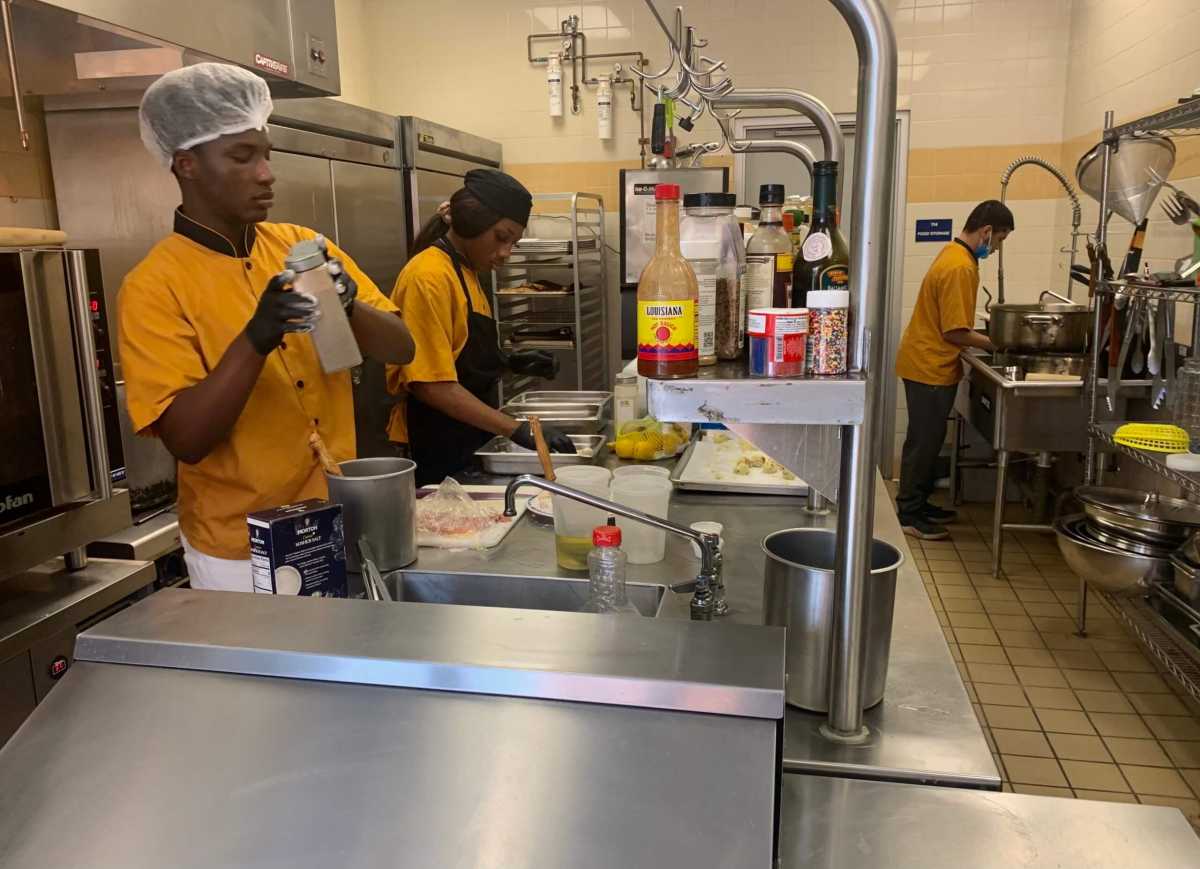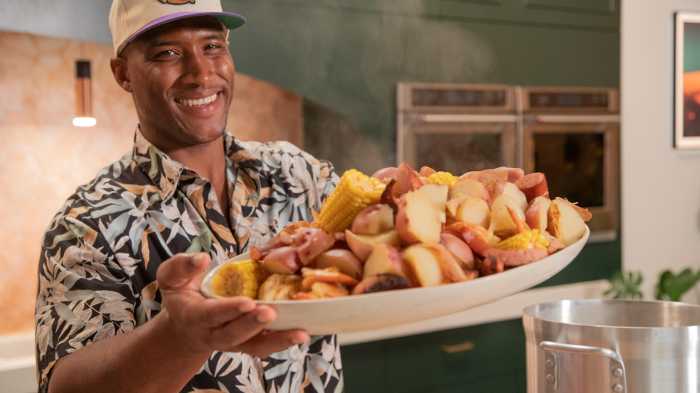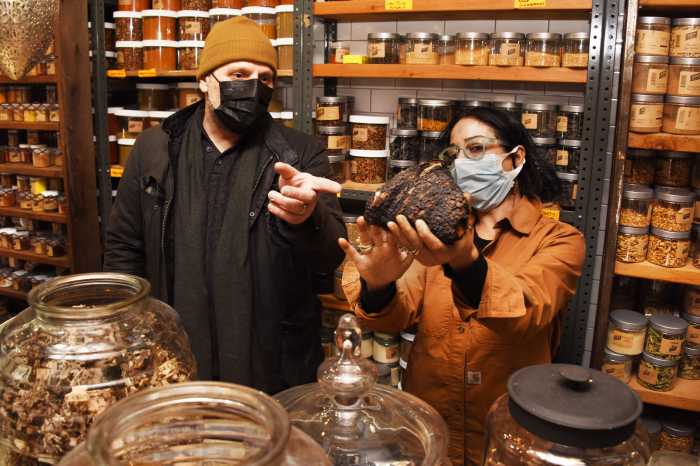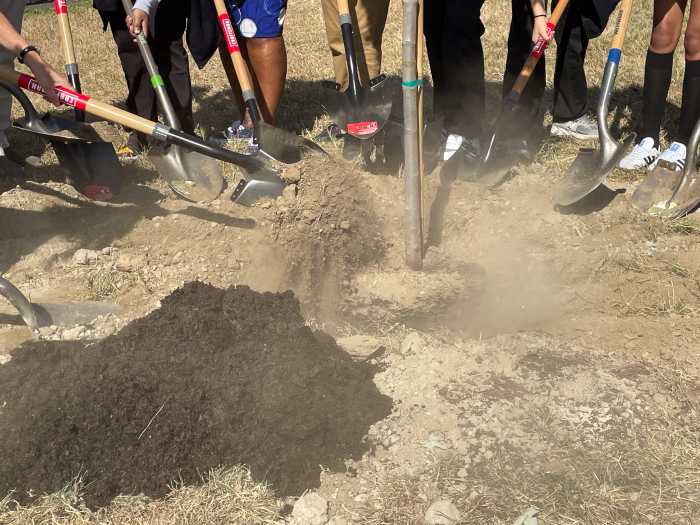Oil pops in the hot skillet over the gas stove. A loud sizzle fills the room as his black gloved hands lay the flour-coated chicken breast in the hot pool.
Smells of broccoli, fries and the comforting spices of a home-cooked meal waft through the air.
Three people with hair nets and orange chef’s uniforms with red letters reading “Hawks Nest Cafe” scramble around the kitchen- prepping, battering, frying and plating.
Akhi, Aaron and Thomas are learning to cook from a New York City chef at The Children’s Village’s teaching kitchen.
The Children’s Village began the teaching kitchen in 2008 to help young people find their passion, said Jeremy Kohomban president of The Children’s Village. The Children’s Village in Dobbs Ferry provides community-based and residential programs for more than 17,000 people each year. The program works with underserved children and families in the greater New York area, young people in foster care, teens who need a second chance and families who need better tools and resources.
The teaching kitchen helps students with communication skills, relationship building and pushes them to recognize their potential. Students are also taught menu planning, restaurant costs, how to order supplies, healthy portion control and table etiquette. Students finish the program with a ServSafe certification which can help them to start training for restaurant managing positions.
“We found that connecting those young people to something that excited them was key to keeping them engaged with learning and eventually building a career,” Kohomban said. “When it comes to working with young people looking to connect, you need to broaden the palette that’s available to them so they can begin to paint their own future.”
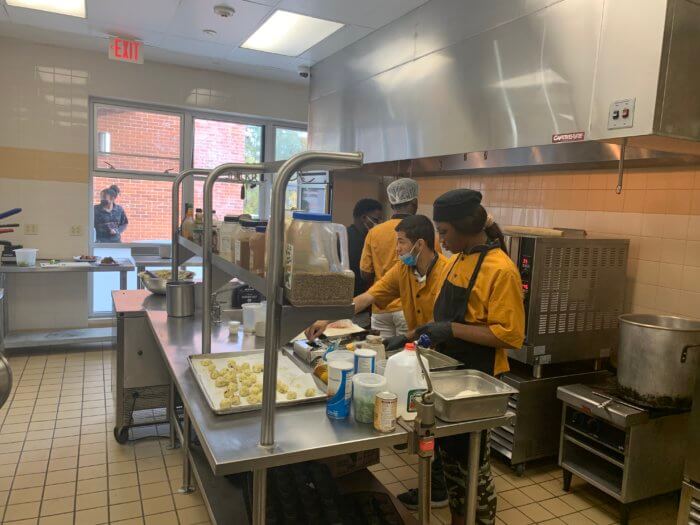
The positive feedback students receive when someone enjoys their food helps build confidence and self esteem. It also gives them a sense of security, knowing they have a skill set they can use to make money.
“For some young people being in the kitchen, learning, serving others is exactly what they need to put them on a path to being self-sufficient and enjoy life,” Kohomban said.
Akhi is a sophomore in high school who has been at The Children’s Village since May. Before working in the kitchen, Akhi didn’t know how to cook. Now, he wants to work in the restaurant industry after graduation.
“My favorite part is when they get it and the look they have on their faces like they did that,” said chef Kelli Scott who teaches the residents at Children’s Village how to cook. “It’s rewarding to know that they’ve learned it, now they’ve done it and they’ve mastered it.”
Akhi said the kitchen has taught him all about the restaurant industry and about the aspect of working together.
“It takes more than one person, you need a team to help you out,” Akhi said.
The monte cristo sandwich is Akhi’s favorite thing to make.
“Before, I didn’t really like the kitchen but the teaching kitchen made me like the kitchen,” Akhi said. “It’s more than cooking. It’s about being one with your peers and knowing I learned this in the kitchen, so I can take it out of here.”
On a Thursday night in early November, chicken piccata and barbecue ribs with potato croquettes and broccoli is on the menu.
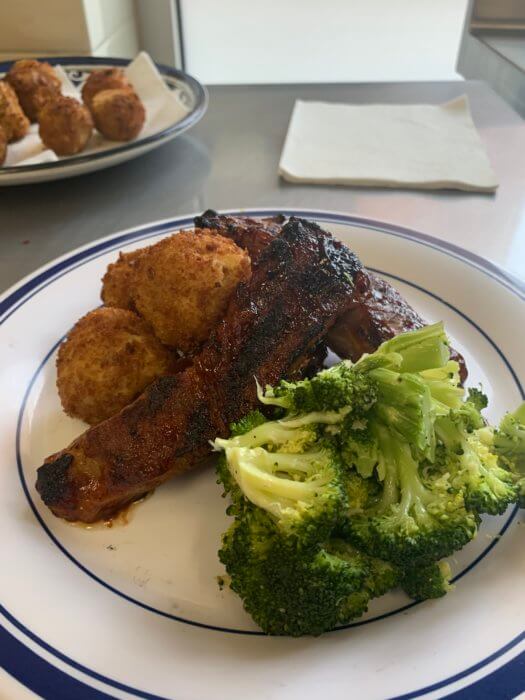
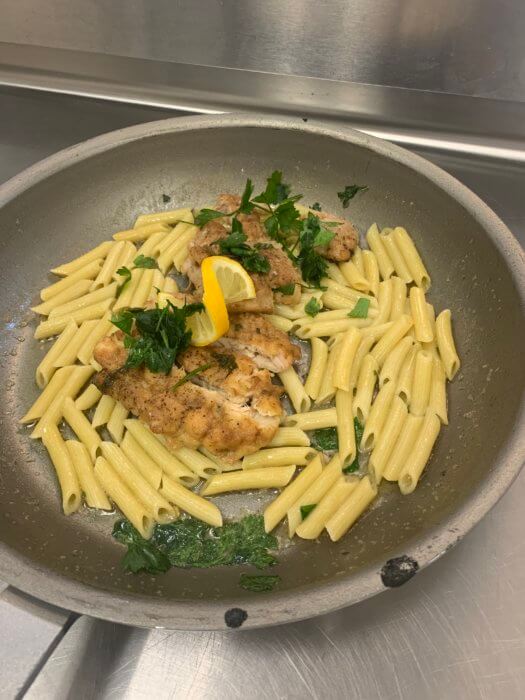
“You have to add the chicken stock,” said Scott as she coached resident Aaron on how to make the chicken piccata.
“I already added it,” Aaron said.
“How many?”
“Two.”
“Ok,” Scott said. “Take the chicken out and put in the noodles and the sauce.”
The pasta flies in the air and lands in the hot pan as Scott shows Aaron how to mix in the sauce with the noodles.
“Plate please,” Aaron calls out to the other students.
The sauce burns in the hot pan.
“Let’s try it again,” Scott said. “Get me another skillet.”
In the kitchen, the students make everything from scratch, and Scott pushes the students to think outside the box when it comes to creating new dishes.
“The biggest thing is for us to develop a place that is comfortable for the mess ups,” Scott said.
Aaron is a junior in high school. He wants to either work in a restaurant or go to cosmetology school after graduation. Aaron’s favorite thing to make is baked ziti or baked mac and cheese with pork chops and string beans.
For some residents, like Aaron, the kitchen has become an outlet, Scott said.
“So we don’t have as many behavior issues for people who work in the kitchen,” Scott said. Adding, “Aaron has grown a lot and is able to talk things out more. Cooking has a way of doing that. With cooking, you have to communicate.”
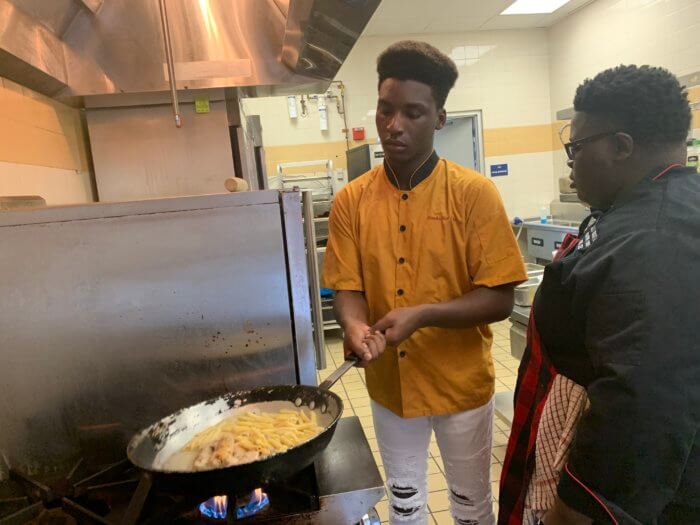
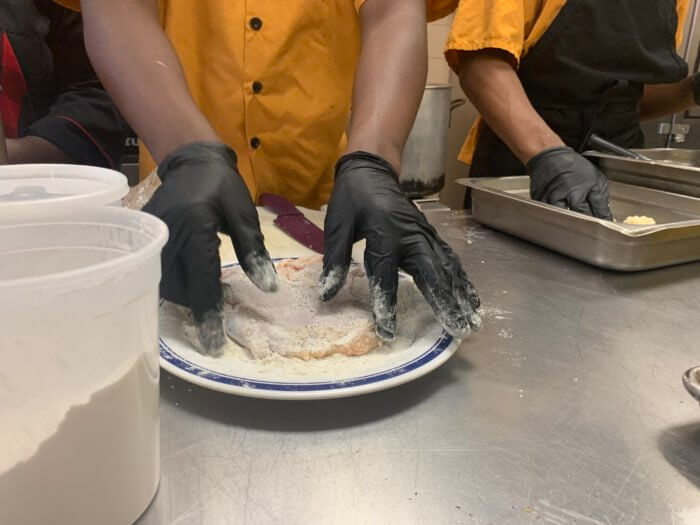
Three nights a week the students cook an entree and a side to serve to other kids and staff at The Children’s Village.
From 4:30 p.m. to 6 p.m. the students practice the meals they will serve that night. Then, they eat the meal they prepared together and get ready for dinner rush. By 7:05 p.m. a line stretches down the hallway. The group cooks about 40 meals a night, all made-to-order.
Thomas, a Children’s Village resident, takes people’s food orders and does the dishes. He loves baseball, especially the Yankees and hopes to one day start a shelter home for the homeless. He said the teaching kitchen has helped him with communication and knowing how to reach out.
“This is my favorite part of the day,” Thomas said.
By the end of the teaching kitchen program, the students create a full menu with appetizers, salads, soups, main courses, desserts and beverages. The students then serve their food to Children’s Village staff who dine and order like they would at any other restaurant.
Replicating the kitchen in the city
This teaching kitchen will be replicated at The Eliza, when it opens its doors in 2022, to serve young people in the city.
Located at 4790 Broadway, The Eliza is a project that will offer the Inwood community 174 affordable homes, a new two-level public library branch, a community learning space and a universal pre-kindergarten facility operated by the New York City Department of Education.
The Eliza’s teaching kitchen will serve young people who were formerly homeless or who are aging out of foster care programs that are in need of vocational skills as well as anyone who is in need of job training and financial assistance, including high school students who did not complete high school.
“Not all of our children go on to academic colleges. A lot are looking for a vocational program and one like this is really quite awesome,” said Yvonne Stennett executive director from Community League of the Heights, a development partner of The Eliza. Adding, “Along with the job opportunities and along with the skills and building a business, it’s (the teaching kitchen) really trying to make sure that all young people are valued and loved and are given opportunities,” Stennett said. “We have to figure out how do we serve the entire youth population regardless of their circumstance.”



